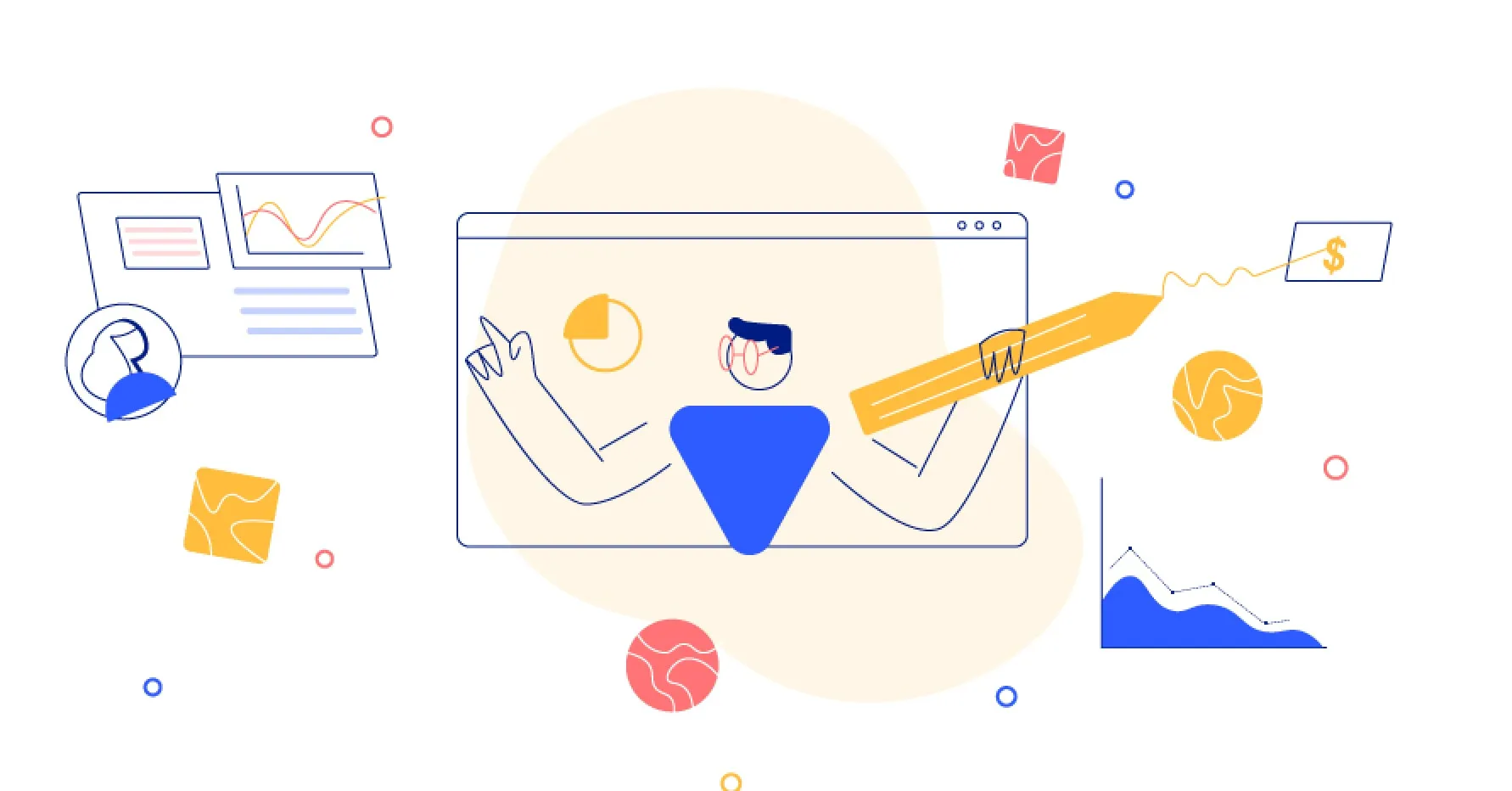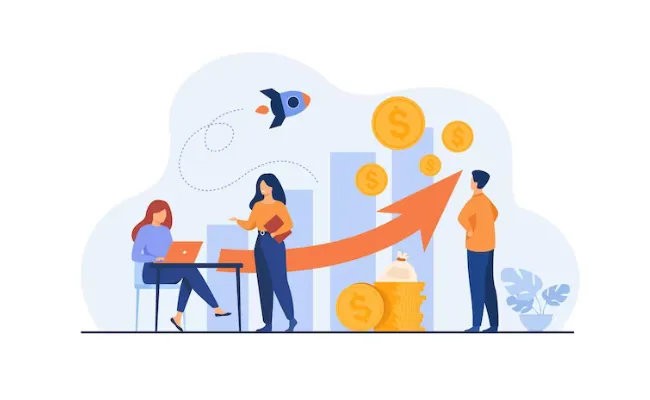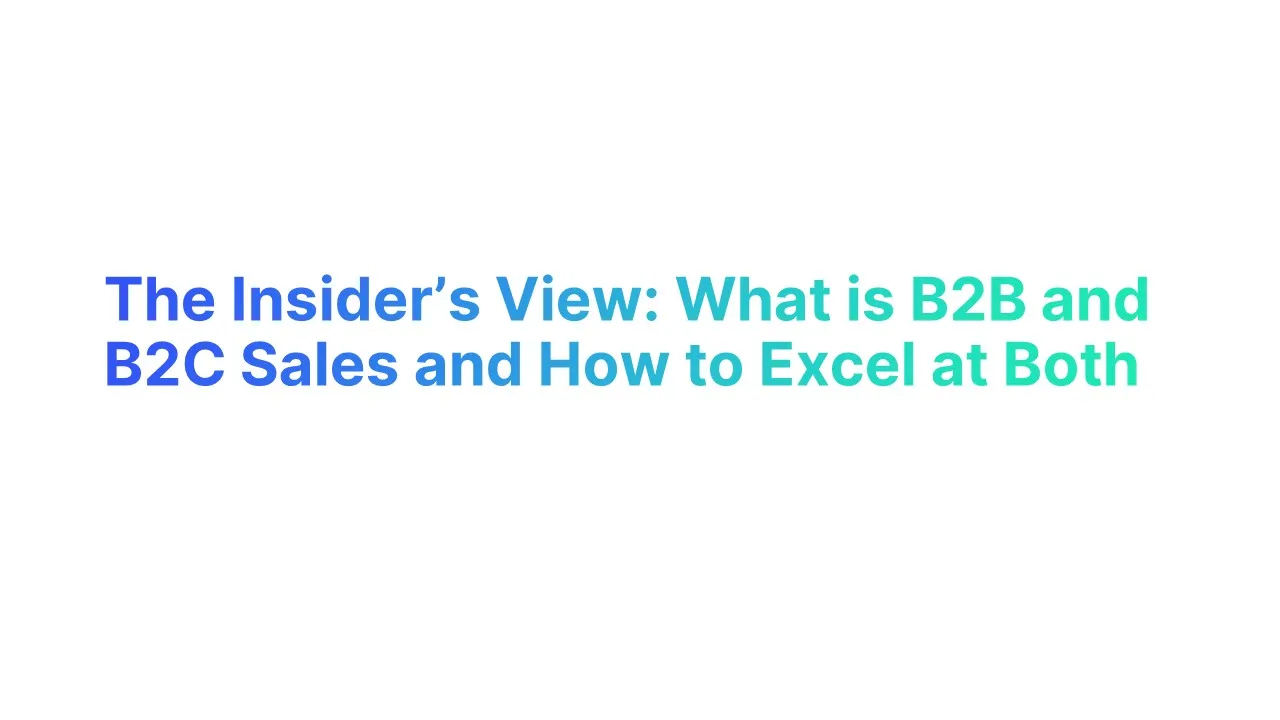Introduction to Sales Models

Overview of Business to Business (B2B) Sales
Business to Business (B2B) sales involve transactions between two companies, where products or services are sold directly from one business to another. This process typically involves multiple decision makers and a longer sales cycle compared to B2C sales.
B2B sales require a defined strategy tailored to business buyers, focusing on how businesses can benefit from the products or services offered.
- 84% of B2B sales start with a referral, underlining the importance of building strong business relationships and stakeholder involvement.
- B2B buyers are 57% through the buying process before contacting sales, highlighting the need for strategic content and defined sales processes.
- The average B2B sales cycle lasts 6-12 months, emphasizing the importance of long-term engagement strategies.
Overview of Business to Consumer (B2C) Sales
Business to Consumer (B2C) sales refer to the direct selling of products or services to individual consumers. This sales model is characterized by shorter sales cycles and involves direct interactions between businesses and end consumers.
Retail sales, online sales, and content marketing play crucial roles in driving B2C sales, focusing on meeting the personal use needs of consumers and enhancing their purchasing decision process.
- 80% of consumers are more likely to purchase from a company that offers personalized experiences, illustrating the impact of emotional connections in B2C sales.
- Online B2C sales are projected to reach $6.2 trillion globally by 2027, showcasing the growing importance of digital marketing strategies.
- 70% of consumers prefer to learn about products through content rather than traditional advertising, pointing to the significance of content marketing and social media platforms in B2C sales strategies.
B2B vs B2C Sales: 8 Key Differences

The sales landscape varies significantly between Business to Business (B2B) and Business to Consumer (B2C) models. Each approach demands unique strategies, understanding, and engagement techniques tailored to their specific audiences and sales cycles.
Let’s explore the key differences between these two fundamental sales approaches:
1. Decision-Making Process
B2B:
- Involves multiple decision makers and often requires approval across several levels of the organization. This complexity can extend the sales cycle, often ranging from 6 to 12 months.
- 58% of B2B sales pipelines stall because the sales rep has not presented value effectively to the decision makers.
B2C:
- Decisions are typically made by individual consumers and can be influenced by emotions or immediate needs, leading to shorter sales cycles, usually completed within days or even moments.
- Consumers make purchasing decisions within 5-7 seconds when buying low-cost items.
2. Customer Relationships
B2B:
- Focuses on building long-term relationships and providing ongoing support, recognizing that each client can significantly impact revenue.
- Long-term contracts or agreements are common, emphasizing the value of ongoing relationships and trust.
B2C:
- Often transactional and not always reliant on building long-term relationships.
- Impulse buying can play a significant role, unlike in B2B sales.
3. Sales Cycle Complexity
B2B:
- Characterized by longer sales cycles that involve detailed product demonstrations and lengthy negotiation phases.
- A typical B2B sales cycle can include up to 7 decision-makers and numerous touchpoints.
B2C:
- Generally simpler and quicker, with fewer steps from discovery to purchase.
- High volume of sales can offset the lower value of individual transactions.
4. Emotional Connection
B2B:
- Emotional connections exist but are more focused on trust, reliability, and achieving business outcomes.
B2C:
- Strong emotional connections can drive purchases, particularly in markets related to lifestyle or personal status.
- 70% of emotionally engaged consumers spend up to twice as much on brands they are loyal to.
5. Marketing Strategies
B2B:
- Utilizes more content-driven marketing, focusing on whitepapers, case studies, and industry data to attract and educate a knowledgeable audience.
- Content marketing generates 3 times as many leads as traditional outbound marketing, but costs 62% less.
B2C:
- More likely to use direct advertising and promotional campaigns that appeal to a broader audience’s emotions and immediate needs.
- Social media platforms are heavily utilized to influence purchasing decisions and enhance brand engagement.
6. Price Sensitivity and Purchasing Power
B2B:
- Less price-sensitive, as purchases are often viewed as investments with an expected ROI. Purchasing decisions are justified through detailed business cases.
B2C:
- Higher price sensitivity among consumers, especially in non-luxury segments. Discounts and promotions can significantly influence purchasing decisions.
7. Buying Motivation
B2B:
- Driven by the need to improve efficiency, productivity, or profitability within a business context.
B2C:
- Purchases are often driven by personal desire, convenience, or social influence.
8. Stakeholder Involvement
B2B:
- Involves engaging with multiple stakeholders to understand varied business needs and create solutions that address these comprehensive requirements.
B2C:
- Typically involves direct interaction with the end consumer without the need to navigate through a corporate structure.
B2B vs B2C Sales: 8 Key Similarities

While Business to Business (B2B) and Business to Consumer (B2C) sales involve distinct strategies and target audiences, they share several core principles and tactics.
Here we examine eight key similarities that underline both B2B and business to consumer sales approaches.
1. Focus on Customer Needs
Both B2B and B2C sales prioritize understanding and meeting the needs of their customers. Whether it’s a business buyer or an individual customer, successful sales strategies hinge on offering solutions that address specific pain points.
Solution-Oriented Sales: Both models strive to solve a problem or fulfill a need. For B2B, this might involve streamlining operations for other businesses through a new software platform. In B2C, it could mean offering a product that simplifies daily tasks for the target audience.
2. Importance of Relationships
Building trust and establishing ongoing relationships are crucial in both sales types. In B2B sales, this might involve long-term contracts and regular support, whereas in B2C, this could be seen in loyalty programs and consistent customer engagement.
Customer Loyalty Programs: In B2C, 75% of consumers say they favor companies that offer rewards. B2B also uses similar tactics, with ongoing relationships leading to repeat sales and referrals.
3. Utilization of Digital Marketing
Both B2B and B2C sales heavily rely on digital marketing strategies to reach their audience. This includes content marketing, SEO, and the use of social media platforms to engage with potential customers.
Content Marketing: Effective use of content marketing can help both B2B and B2C companies educate their market, with 70% of marketers actively investing in content marketing.
4. Emphasis on Customer Experience
A seamless customer journey is pivotal, whether selling to businesses or consumers. This includes the entire process from initial contact through post-purchase support.
Online Sales Platforms: Both sectors leverage online sales platforms to enhance customer experience, with B2C e-commerce sales expected to hit $6.2 trillion by 2027, and B2B not far behind in its digital transformation.
5. Need for Personalization
Tailoring the sales process to the specific needs and behaviors of customers is a cross-cutting necessity in both B2B and B2C sales.
Targeted Marketing: B2C marketers use targeted ads to reach individual consumers, while B2B sales often customize proposals and presentations for business buyers.
6. Strategic Decision Making
Decisions in both B2B and B2C sales are often based on data-driven insights. Companies in both sectors use market research and analytics to guide their strategies and improve outcomes.
Data-Driven Strategies: 64% of marketing executives "strongly agree" that data-driven marketing is crucial in the economy.
7. Complex Sales Cycles
While generally longer in B2B due to the involvement of multiple decision makers and larger transaction values, complexity also exists in B2C, particularly in high-value purchases like cars or real estate.
Multiple Touchpoints: Both sectors often require multiple engagements with prospects before closing a sale, emphasizing the importance of a cohesive multi-channel approach.
8. Importance of Branding
A strong, cohesive brand is essential to both B2B and B2C. It helps in creating an emotional connection with customers, which can be a decisive factor in the purchasing process.
Brand Loyalty: Statistics show that consistent branding across all channels can increase revenue by up to 23%.
5 B2B and B2C Sales Strategy to Excel

B2B Sales Strategies
1. Account-Based Marketing (ABM)
ABM targets high-value accounts by delivering personalized marketing strategies tailored to each segment of the audience. This approach often leads to a 70% increase in the opportunities created, as it focuses on aligning marketing and sales efforts to increase engagement at the account level.
Develop personalized content and messaging for key decision-makers.
Implement targeted campaigns that address specific pain points and industry challenges.
2. Leveraging Customer Relationship Management (CRM) Tools
Efficient use of CRM tools can boost sales productivity by up to 34%. CRM systems help in organizing customer data effectively, enabling sales teams to make data-driven decisions.
Track customer interactions to provide tailored solutions and timely follow-ups.
Analyze customer data to predict future buying behaviors and identify cross-selling or upselling opportunities.
3. Value-Based Selling
This method focuses on understanding and reinforcing the value that your product or service brings to a business customer. Reports indicate that highlighting unique benefits over features can increase deal closure rates by 6% to 10%.
Train sales teams to articulate the business value of your offerings, not just the technical specifications.
Prepare ROI calculations and case studies to substantiate the value proposition.
4. Strategic Partnerships and Networking
Forming strategic partnerships can extend your reach and credibility. Companies report a 35% increase in visibility and a 25% increase in sales when they engage in partnerships with businesses that complement their offerings.
Collaborate with non-competing companies in the same industry.
Attend industry conferences and seminars to build a professional network that supports lead generation.
5. Continuous Sales Training and Development
Continuously training your sales team can increase individual performance by up to 50%. This ensures they are up to date with the latest sales techniques and industry trends.
Implement regular training sessions on new sales tools and strategies.
Encourage participation in industry-specific training programs to maintain a competitive edge.
B2C Sales Strategies
1. Emotional Branding
Emotional branding creates a personal connection with consumers, leading to a higher likelihood of purchase. Studies show that brands which successfully establish an emotional connection achieve up to a 50% higher customer loyalty rate.
Utilize storytelling in marketing campaigns to build a brand narrative that resonates with consumers.
Engage in social and environmental causes to strengthen emotional ties.
2. Omnichannel Presence
Being present across multiple platforms increases the chance of conversion by 250% as it meets customers where they are most comfortable shopping. Whether online, in-person, or via mobile, providing a seamless shopping experience is key.
Ensure consistent messaging and branding across all channels.
Utilize data analytics to understand consumer behaviors across different platforms and tailor strategies accordingly.
3. Customer Feedback and Responsive Adaptation
Actively collecting and acting on customer feedback can increase customer retention rates by 5% to 10%. This approach demonstrates that a brand values its customers' input and is committed to continuous improvement.
Implement feedback mechanisms across all sales channels.
Regularly update products or services based on consumer suggestions and market demands.
4. Personalized Marketing
Personalization can lift sales by 10% or more. By using data analytics to understand individual consumer preferences and behaviors, companies can tailor their marketing efforts to match.
Develop targeted marketing campaigns based on purchasing history and browsing behavior.
Use AI and machine learning to deliver real-time personalized recommendations.
5. Flash Sales and Time-Limited Offers
Limited-time offers create a sense of urgency and can boost sales significantly during the promotion period. Reports suggest that flash sales can increase transaction rates by up to 35%.
Plan flash sales during peak shopping periods or to clear out inventory.
Promote these sales extensively across social media and email marketing to maximize reach.
Concluding Thoughts on Excelling in Both B2B and B2C Sales Process
To excel in B2B and B2C sales, focus on tailored strategies for each model. B2B sales reps should understand complex buying processes and develop strategic relationships, using tools like CRM and ABM to enhance sales effectiveness. For B2C, emphasize emotional connections with individual customers, provide personalized experiences, and respond swiftly to customer feedback.
Both sales types require a deep understanding of your audience, delivering value, and building strong relationships. Adapting to the specific needs and decision-making processes of each group, whether they are business clients or individual customers, is crucial for success in both arenas.





.webp)


